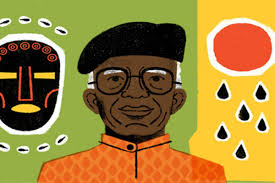Ernest Hemingway’s first novel, The Sun Also Rises, has recently been reprinted by the
Library of America. I thought it would
make a good re-read. On second thought, I think I read it before, now I am more inclined to believe it was assigned when I was in high school, but I probably
watched the movie instead of reading it.
The novel is
one of the classics of American literature, penned by perhaps the greatest of
the Lost Generation writers. The Sun
Also Rises takes place in France and Spain in the years between the World
Wars. Significantly, The Lost Generation
was a working title for Hemingway’s book.
There are two
primary characters. One is the narrator Jake Barnes, an
American army veteran who stayed in Europe after World War I working as a foreign
correspondent. He lives in the Montmarte
neighborhood of Paris and has a large clique of writer friends, some
successful, some not, all of whom could be categorized as alcoholics.
The other
primary character is Lady Brett Ashley, an English woman who was a volunteer at
the hospital where Jake was treated for his war injuries. They had fallen madly in love, a relationship
never to be consummated as a complication of his injury and recovery. After the war, Lady Ashley returns to England and
marries.
The action in
the story begins a few years later when Brett returns to Paris to escape her
abusive husband. With her is a man named
Mike whom she intends to marry once her divorce is finalized. He was also in the hospital at the same time
as Jake during the war. Brett and Mike (also
severe alcoholics) already know many of Jake’s friends – each of whom are
charmed by her. There is soon a new
arrival into this group of ex-patriots, the recently divorced Robert Cohn, a
writer and old friend of Jake’s. He immediately
falls for Brett, and they have a fling. The crux of the story
then becomes how Brett handles each of these people who are in love with her,
and how they compete for her attentions – not the least of whom is Jake.
These
machinations climax when they all attend the Fiesta de San Fermin (Running of
the Bulls) in Pamplano, Spain where Brett falls for a 19-year-old matador
named Pedro Romero. Long story short, a
jealous and taunted Robert, a middleweight boxing champion when he attended
Princeton, knocks out his good friend Jake, flattens Brett’s fiancée Mike (who is aware of the fling), and seriously
beats up Pedro the day before his big bullfight.
While the above plot synopsis matches what I remember about my initial read (?) of The Sun Also Rises in say 1970, there is one important aspect of my reread 50 years later, that I had no recollection of: a significant streak of antisemitism. I remember the infighting and name-calling between the guys – they were all in a fierce competition for Brett – yet, now I note that the put-downs of Robert were repeatedly expressed as antisemitic slurs and stereotypes. The biggest culprit of this was Brett’s fiancée Mike, but all of the characters – including Brett -- are seen to routinely concur. This is so blatant that there is no way I could have NOT noticed it, which is why I think maybe I did not read the book.
When I
finished my “reread” I decided to re-watch the 1957 movie made from the book. It is a classic in its own right, starring
Tyrone Power as Jake, Ava Gardner as Brett, and Mel Ferrer as Robert. Sure enough, none of the antisemitism from
the book is in the movie (I have not watched the 2007 remake).
So, my
unanswered question is this: Is this
antisemitism a reflection of Hemingway, or is it a case of Hemingway observing
antisemitism in the 1920s and exposing it (as in Christopher Isherwood)? I am not a Hemingway-scholar, I do not know
the answer.
Recommendation: Yes to the 1957 movie, it is excellent. As for the book, it is a classic and I am not
going to say don’t read it. I will however
say if you read the book you must also watch the 1957 movie and take note of what has been edited out.

























